In the early 1990s, it seemed as though the IHR would continue to grow its system. The system had grown from 100 miles to more than 450, and the Newton line was hosting unit trains of coke and cars of flour gained in interchange with the Indiana Rail Road. Trains were moving, Alcos were smoking, and the sun was shining. What more could anyone want?
By the end of 1993, track conditions were already deteriorating, leading to nearly daily derailments in 1993 and ’94. Rail heads were so worn, wheels would ride up on the angle bars at rail joints along the segment between Newton, Ill., and Browns.
On Nov. 15, 1994, Indiana Hi-Rail entered Chapter 11 bankruptcy, and in early 1995, its court-appointed trustee, R. Franklin Unger, began disposing of assets to pay off creditors. The Newton-to-Browns segment had already been embargoed since early 1995, and the Interstate Commerce Commission approved its abandonment on May 3, 1996.
Throughout the following year, segments were sold and/or abandoned. In short time, all the lines were in the hands of new shortline operators, grain companies, connecting Class I carriers, or just abandoned. On Dec. 22, 1997, Indiana Hi-Rail Corp. formally stopped being a rail carrier.
In 1996, RailAmerica began operating IHR’s Poseyville-Owensville and Browns-Evansville lines, and contracted with Mid-America Locomotive for a part-time crew of two to run trains twice weekly to Harwood-Poseyville-Cynthiana, and abandoned the six miles of Cynthiana-Owensville trackage. In late July, RA made a last “clean-up” run to Browns to collect a Mid-America-owned switcher. This Owensville Terminal crew collected scrap along its way back to Evansville, and became the last crew to run a train over the Wabash River Bridge.
[The railroad] sat unused and rusting for nearly a decade until a flood the night of Jan. 12, 2005, dislodged a concrete pier, dropping two spans into the water. They remained in the water for some time, collecting debris and becoming an eyesore, until the Army Corps of Engineers dragged them out of the river and hauled them away for scrap. It was a fitting end for the Indiana Hi-Rail.





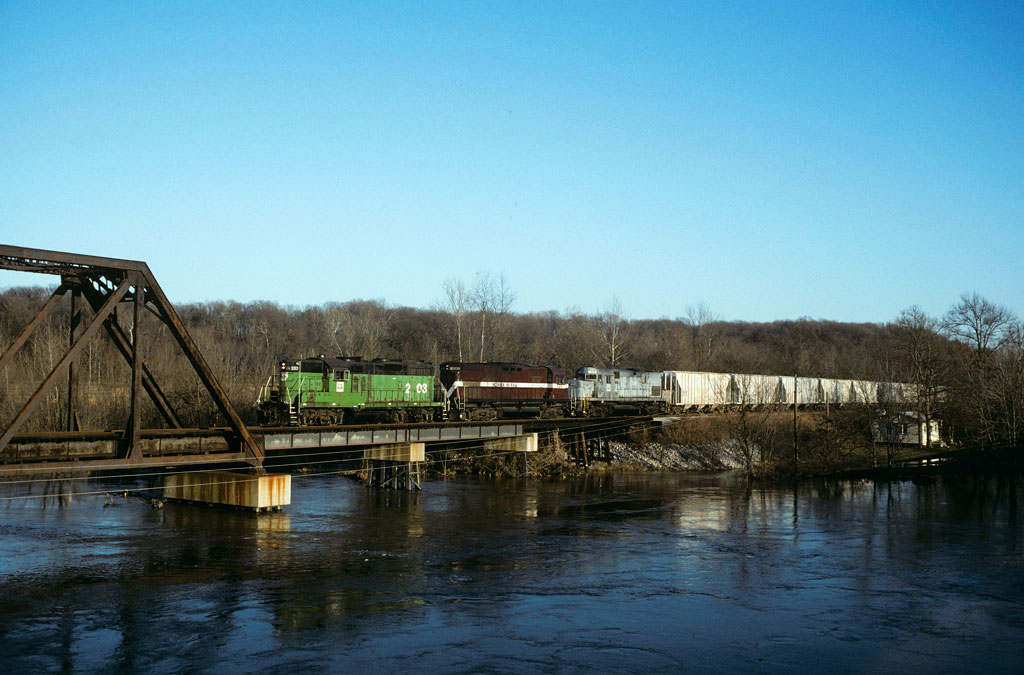
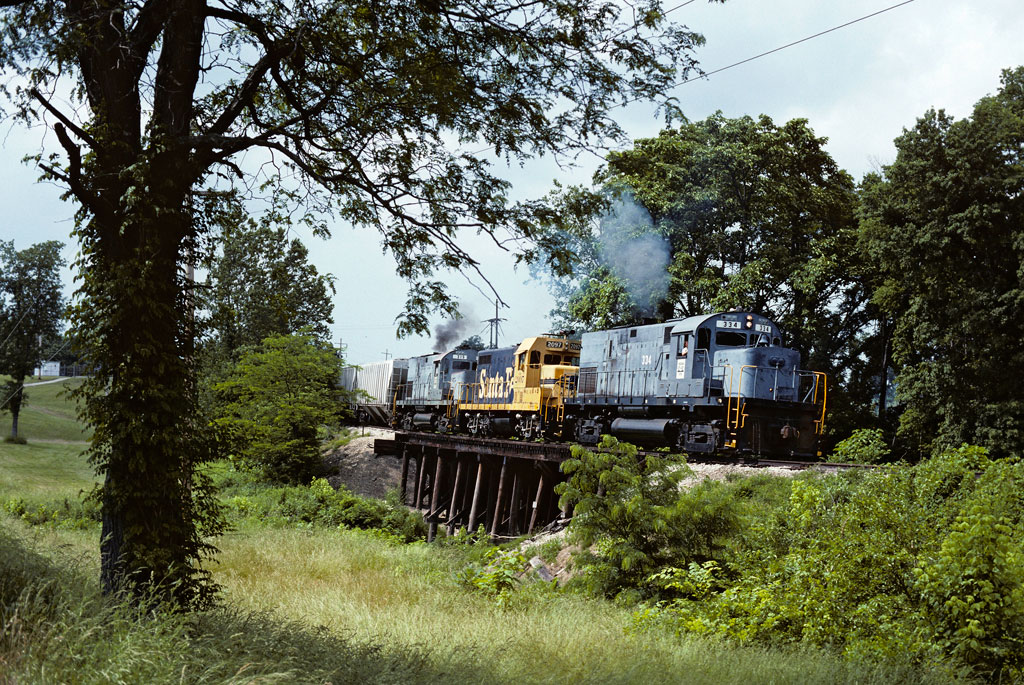
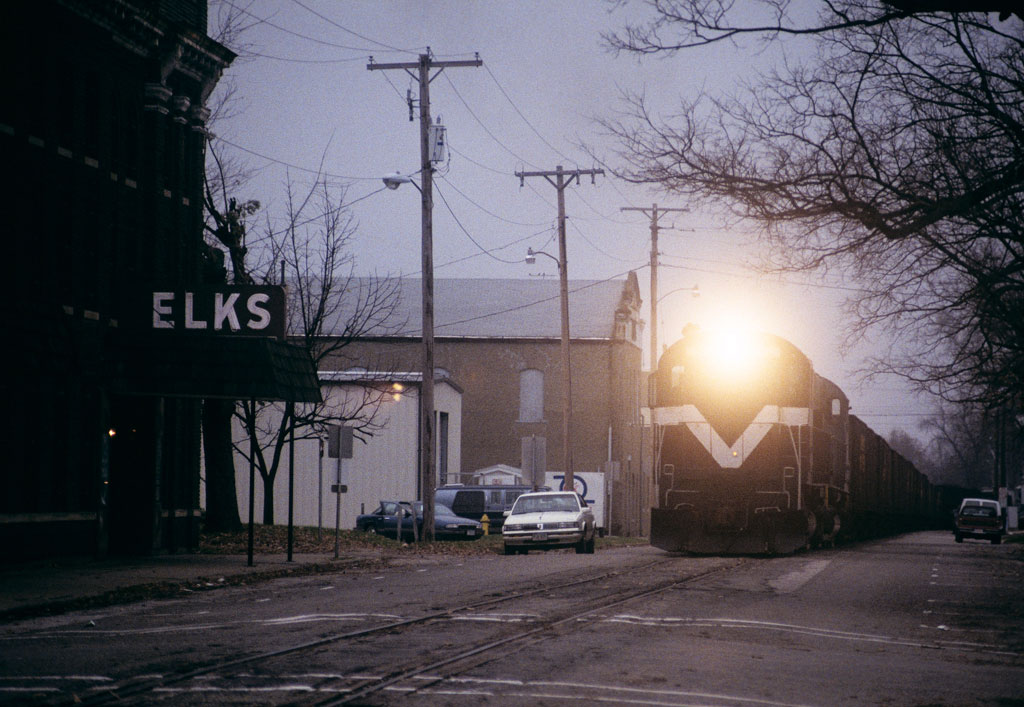
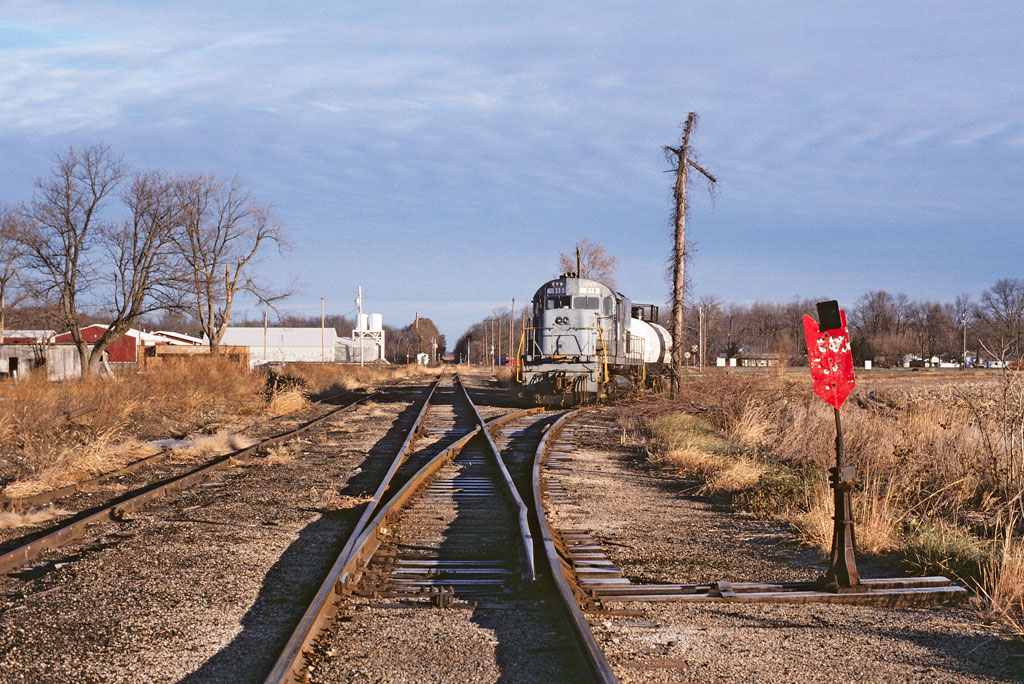
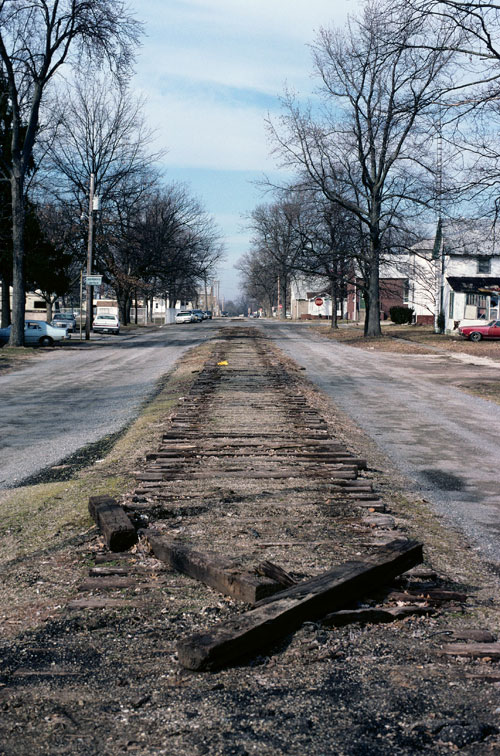
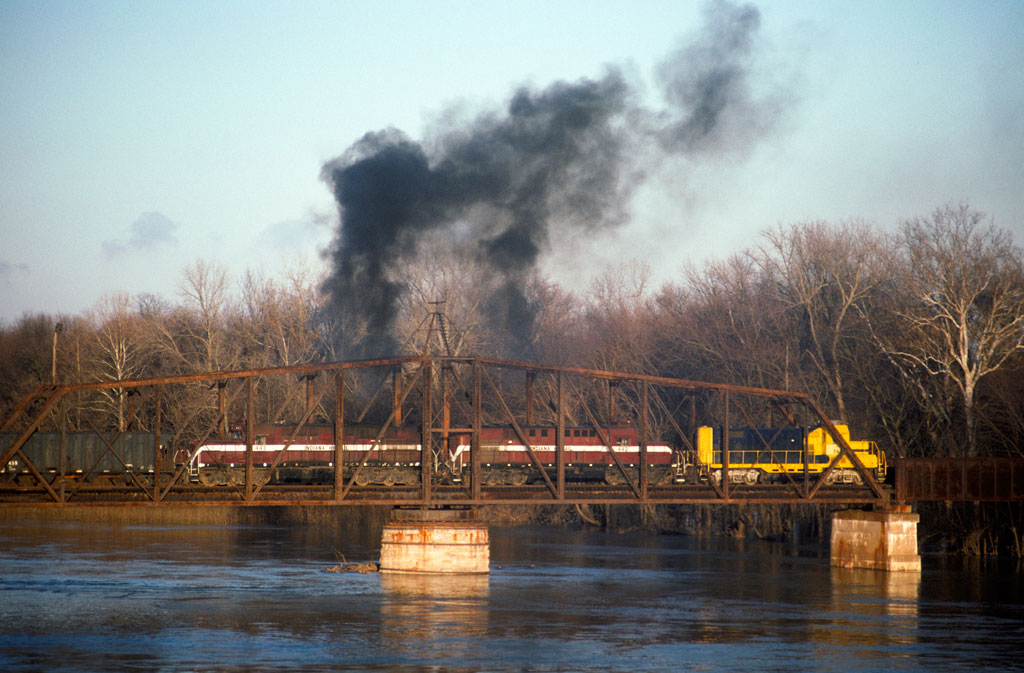









I used to live here. We used to ride our bikes along the Illinois Central trains as they worked up and down Kitchell Street. One Sunday afternoon there was a derailment (one of many) north of Main Street which left almost the entire town of Olney split in two and blocked the B&O Illinois Sub for 5 or 6 hours. The only way around was to use the US50 overpass south of town. A B&O westbound for EStL sat yarded in transit waiting for IC to get the train re-railed and the diamond cleared. Fortunately for B&O, they had cut their line through the bluff in Olney and the 3 main streets bridged over.
Probably the most grief this line took (from Evansville to Newton) is when there was a truckers strike in 1972 and IC was taking all of L&N’s traffic at Evansville up to Chicago through Olney. What used to be 2 trains a day turned into 4 and it worked only if it didn’t derail somewhere along the way.
People in Olney would hear the engine horns as the northbound crossed IL-130 and hurry to get back across the tracks in case a derailment happened.
IC put hardly anything into the Olney District except the line south of the B&O (which remains today) to service the many industries like grain,bulk gravel and bike parts for the AMF (now Pacific Cycle) plant. When the CIPS Newton Plant was under construction, we thought the IC would fix it up down to at least Browns to the Southern (now NS), as the Grayville/Wabash River Bridge could not handle unit coal loads.
Wrong we were when IC upgraded only from Effingham to the power plant and no further. It’s the only section left that CN maintains south of Mattoon.
I left just before IC had their big fire sale. The original PD&E was pulled up from Newton to Toledo. INRD bought the Newton-Indianapolis route. I came back occasionally to see the oddball consists that IHRC would throw together and roll down Kitchell Street. My friends said IHRC had constant derailments and were spilling more grain than they were delivering. The tracks between Olney and the Boos pole yard south of Newton got ridiculously out of shape as derails became common.
I was surprised to hear at a historical meeting in Indianapolis that the IC offered the Newton-Olney route to INRD for nothing with the Newton-Indy ROW purchase. Tom Hoback said he would have liked to have access to the south Olney online business, but he was on a very tight budget when he started INRD and the ROW was in really bad shape.
For the historical minded, while the IC station and freight office was north of Main Street in Olney, many of the IC passenger trains actually stopped on Kitchell in front of the Elks Lodge. There was a hotel at the lodge and much of the oil-boom era (1900-1940) entertainment came down from Chicago on the IC to perform at the Elks on their stage.
Olney made an attempt to save what was left of the IC buildings and finally raised the money to move them, only to have an arsonist torch them weeks after they were carefully moved.
The history around this route and its predecessors is all very interesting.
The Peoria, Decatur & Evansville, the Cincinnati Dayton & Hamilton, The Danville, Olney and Ohio River (also rich with derailments between West Liberty and Sidell) all came for the access to the agriculture and oil.
With the CSX line now cut back at Flora and O’Fallon, traffic at Olney is that of a simple branch line, the local rail history continues to reach farther into the history books.
There is a large quantity of frac oil along the ROW from Newton to Grayville. Anything is possible to add to the rich history in the future.